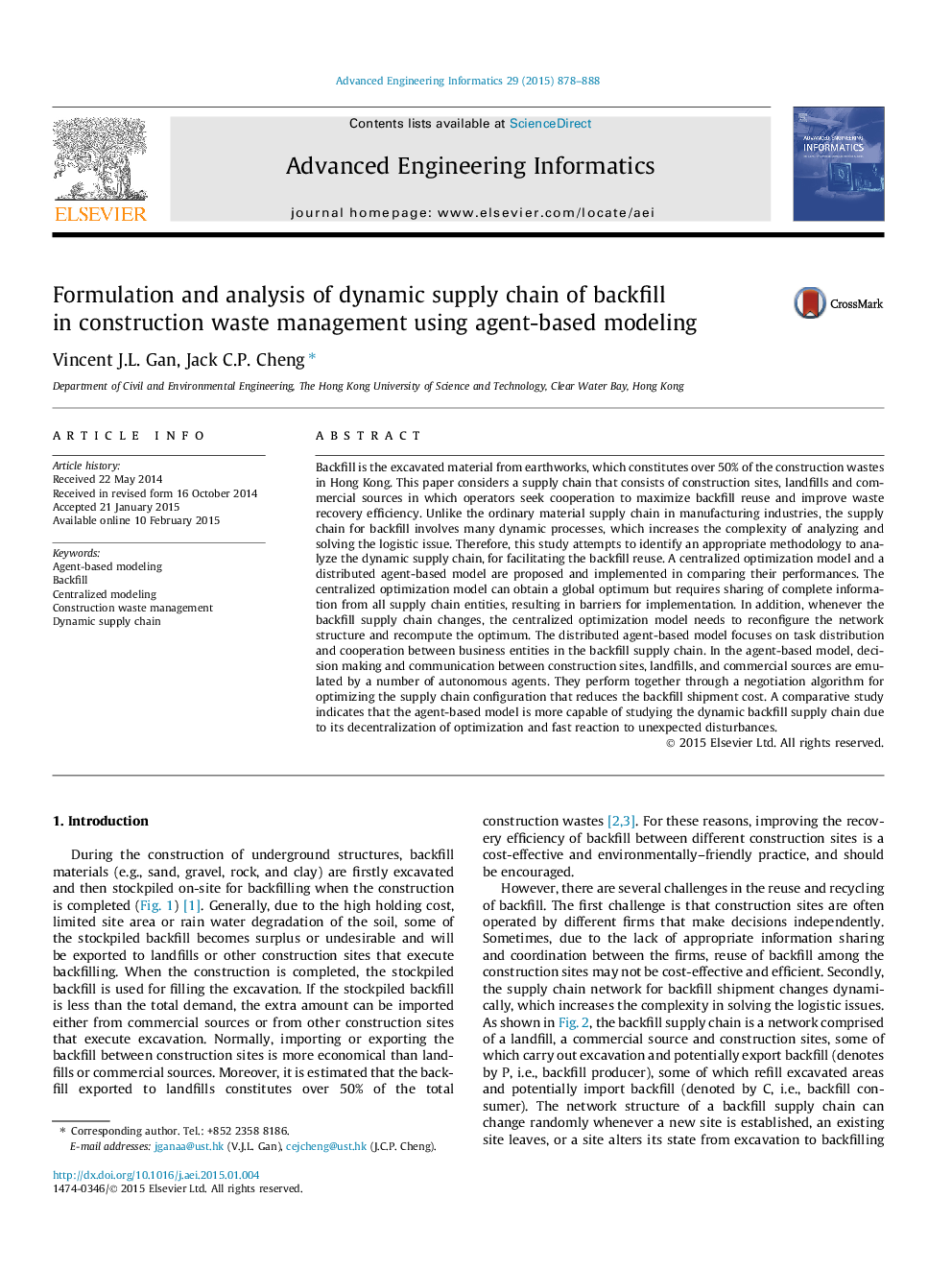| کد مقاله | کد نشریه | سال انتشار | مقاله انگلیسی | نسخه تمام متن |
|---|---|---|---|---|
| 241959 | 501794 | 2015 | 11 صفحه PDF | دانلود رایگان |
• This paper proposes two optimization models to solve a dynamic supply chain issue.
• The outcomes help reuse and recycle backfill, a major type of construction waste.
• The models are based on mathematical programming and agent-based modeling.
• The comparative study illustrates the performance of both approaches.
• Agent-based modeling is more capable of analyzing the dynamic supply chain.
Backfill is the excavated material from earthworks, which constitutes over 50% of the construction wastes in Hong Kong. This paper considers a supply chain that consists of construction sites, landfills and commercial sources in which operators seek cooperation to maximize backfill reuse and improve waste recovery efficiency. Unlike the ordinary material supply chain in manufacturing industries, the supply chain for backfill involves many dynamic processes, which increases the complexity of analyzing and solving the logistic issue. Therefore, this study attempts to identify an appropriate methodology to analyze the dynamic supply chain, for facilitating the backfill reuse. A centralized optimization model and a distributed agent-based model are proposed and implemented in comparing their performances. The centralized optimization model can obtain a global optimum but requires sharing of complete information from all supply chain entities, resulting in barriers for implementation. In addition, whenever the backfill supply chain changes, the centralized optimization model needs to reconfigure the network structure and recompute the optimum. The distributed agent-based model focuses on task distribution and cooperation between business entities in the backfill supply chain. In the agent-based model, decision making and communication between construction sites, landfills, and commercial sources are emulated by a number of autonomous agents. They perform together through a negotiation algorithm for optimizing the supply chain configuration that reduces the backfill shipment cost. A comparative study indicates that the agent-based model is more capable of studying the dynamic backfill supply chain due to its decentralization of optimization and fast reaction to unexpected disturbances.
Journal: Advanced Engineering Informatics - Volume 29, Issue 4, October 2015, Pages 878–888
